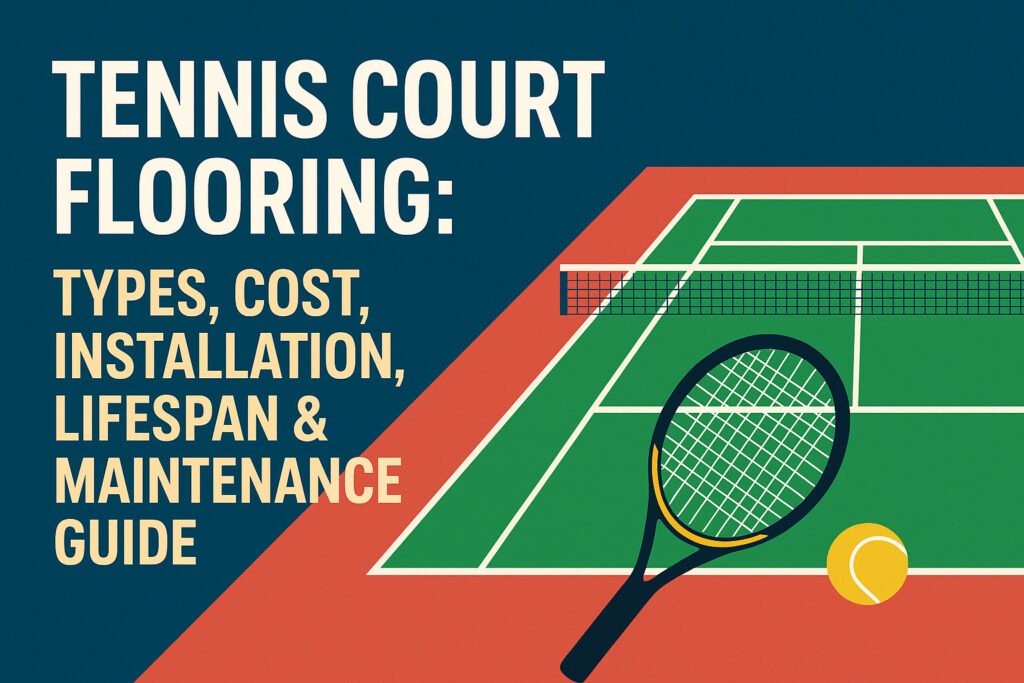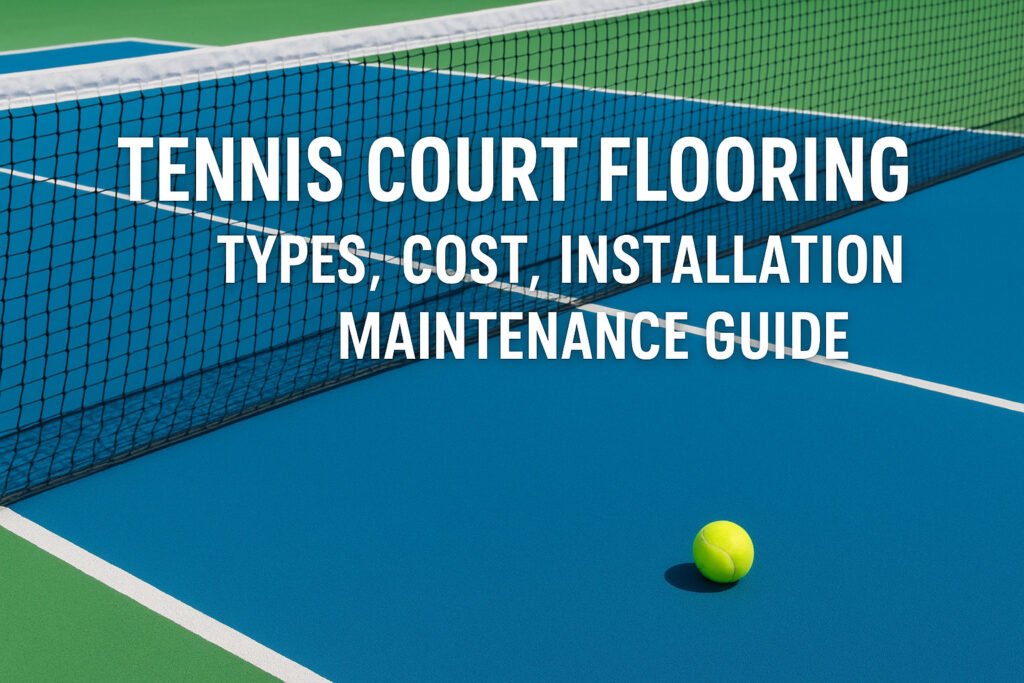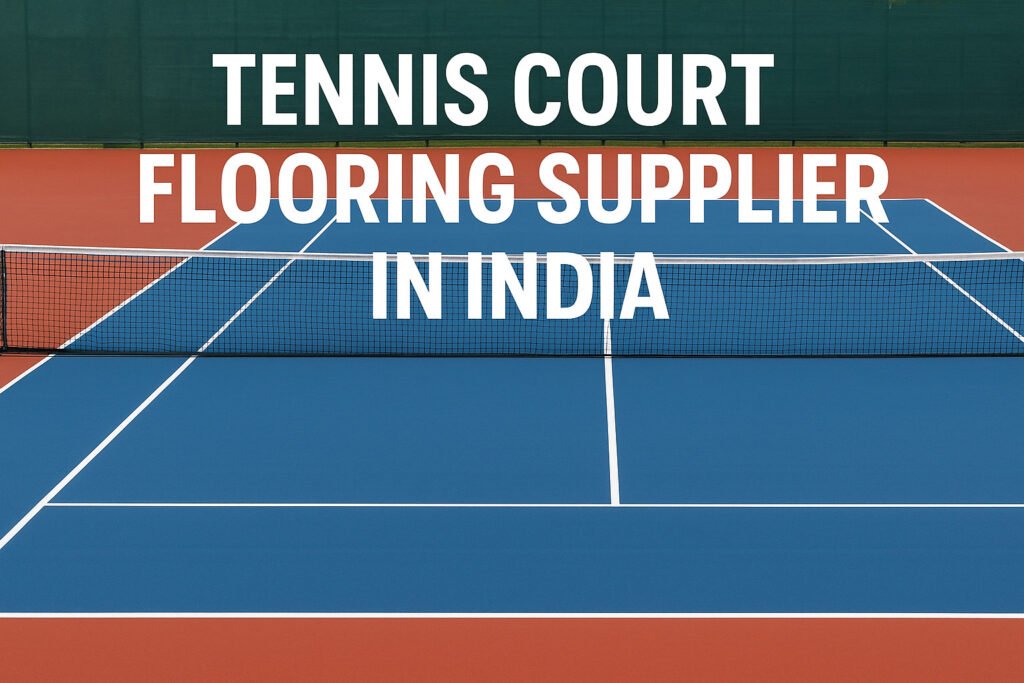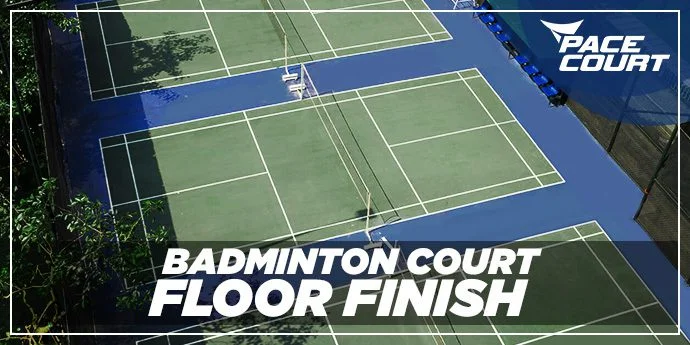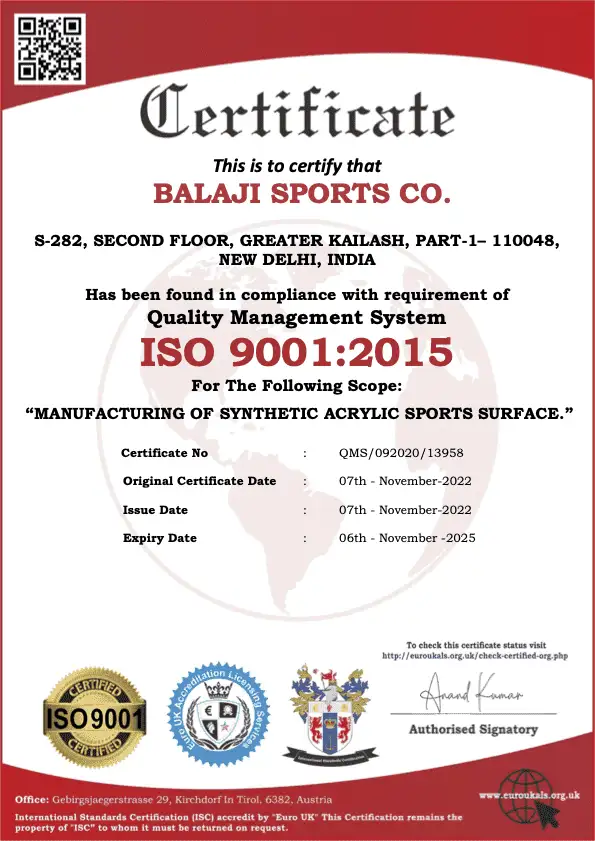Tennis Court Flooring: Types, Cost, Installation, Lifespan & Maintenance Guide
Tennis is one of the world’s most popular sports, played by professionals, academies, schools, and recreational players. While training and skill matter, the quality of the tennis court flooring determines performance, player safety, game speed, and comfort. Choosing the right flooring material is not just a construction decision — it is an investment in durability, safety, and playability. Whether you are planning a tennis court for a school, sports club, residential community, stadium, academy, or private property, this detailed guide explains everything you need to know — from types and cost to installation, maintenance, and lifetime value. Why Tennis Court Flooring Matters A tennis court surface plays a crucial role in: A well-constructed tennis court not only enhances player experience but also reduces maintenance and increases lifespan — delivering greater value over time. Types of Tennis Court Flooring (With Pros & Cons) There are several types of tennis court surfaces used globally. Each has unique gameplay characteristics, costs, and maintenance needs. Below is an in-depth comparison: 1️⃣ Acrylic / Synthetic Tennis Court Flooring (Most Popular in India) Acrylic flooring is becoming the standard for modern tennis courts due to its durability, comfort, and affordability. Features Pros✔ Superior player comfort✔ Good shock absorption✔ Weather-resistant✔ Consistent bounce and speed✔ Low maintenance Cons✘ Requires skilled installation Best ForAcademies, schools, clubs, residential societies, and professional courts. 2️⃣ Hard Court (Concrete + Coating) Hard courts are widely used in tournaments like the US Open. Pros✔ Fast gameplay✔ Durable Cons✘ High impact on knees✘ Not suitable for kids or beginners Best ForAdvanced players and professional stadiums. 3️⃣ Clay Court Clay causes a slower playing experience and longer rallies. Pros✔ Ideal for stamina & technique development Cons✘ High maintenance✘ Not suitable for outdoor commercial spaces in humid/rainy areas Best ForEuropean-style academies and training programs. 4️⃣ Grass Court Historically used in Wimbledon. Pros✔ Very fast surface Cons✘ Very high maintenance✘ Expensive✘ Requires frequent trimming, watering, and rolling Best ForPremium private courts — not a practical choice in India. 5️⃣ Turf / Artificial Grass Court Sometimes used for multi-sport spaces. Pros✔ Soft & injury-free✔ Suitable for multi-purpose play Cons✘ Ball bounce is less predictable✘ Not approved for professional tennis performance Best ForRecreational spaces and schools on budget. Best Choice for India (Recommendation) ➡ Acrylic / Synthetic Tennis Court FlooringIt offers the best balance of cost, durability, player comfort, and weather resistance. Tennis Court Flooring Cost in India The cost of building a tennis court depends on material, base preparation, and labour. Item Approx. Cost Synthetic/Acrylic flooring ₹120 – ₹200 per sq. ft. Concrete base preparation ₹230 – ₹350 per sq. ft. Accessories (net posts, lights etc.) Optional & varies Total project estimate ₹9.5 – ₹18 lakhs per court (Depending on selection) What changes the final price If the base ground already exists, the cost reduces significantly. ennis Court Installation Process (Step-by-Step) A professional flooring installation ensures long-lasting performance. Below is the standard sequence: 🔹 1. Ground Assessment Soil testing and slope evaluation to avoid water stagnation. 🔹 2. Base Construction (Concrete/Asphalt) A proper base with: 🔹 3. Surface Grinding & Cleaning Ensures uniformity and prevents cracks. 🔹 4. Cushion Coating Multiple layers for shock absorption and player comfort. 🔹 5. Topcoat Acrylic Surface Coloured layers that define speed and bounce. 🔹 6. Line Marking Standard ITF-approved court lines. 🔹 7. Final Inspection & Handover Bounce test, slip resistance check, and surface uniformity. Tennis Court Flooring Lifespan Flooring Type Lifespan Acrylic / Synthetic 5–10 years Hard court 7–12 years Clay court 3–6 years Grass court 1–3 years Turf court 4–6 years Maintenance Guide for Long-Lasting Tennis Courts To extend lifespan and performance, follow simple maintenance: Daily Monthly Yearly Every 5–6 Years 🚫 Avoid ❌ Using hard-bristle brushes❌ Water stagnation near court❌ Using harsh detergent chemicals With proper care, an acrylic tennis court stays fresh for years with minimal expenses. Tennis Court Colour Options Most popular combinations: Custom branding can also be added for resorts, academies, and schools. Indoor vs Outdoor Tennis Court Flooring Category Indoor Outdoor Flooring Type Acrylic/Turf/Wood Acrylic/Clay/Concrete Weather Influence No High Maintenance Moderate Low–High depending on flooring Cost Higher Lower Most buyers in India prefer outdoor acrylic courts due to durability and low maintenance. Tennis Court Flooring Trends in 2025 These trends are increasing the demand for modern sports infrastructure across India. Why Choose a Professional Tennis Court Flooring Manufacturer? DIY or local contractor flooring often results in: A professional installer ensures:✔ Correct slope✔ ITF-approved materials✔ Long-lasting surface✔ Perfect bounce and gameplay Choosing Pacecourt for Tennis Court Flooring If you want a tennis court that is durable, safe, visually stunning, and built to international standards, Pacecourt is a trusted choice. 🔥 Pacecourt Advantages 🚀 Best suited for Get a free site inspection + free 3D tennis court design before starting your project. Final Thoughts Selecting the right tennis court flooring is a critical decision that determines performance, lifespan, safety, and investment value. Among all materials available in India, acrylic synthetic flooring remains the most reliable, budget-friendly, and long-lasting solution for both beginners and professionals. Whether you’re building a new tennis court or upgrading an old one, choosing a certified flooring manufacturer and trained installer guarantees superior results and long-term satisfaction.

